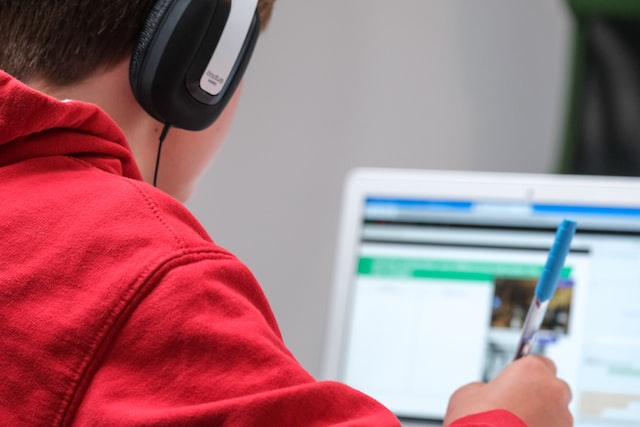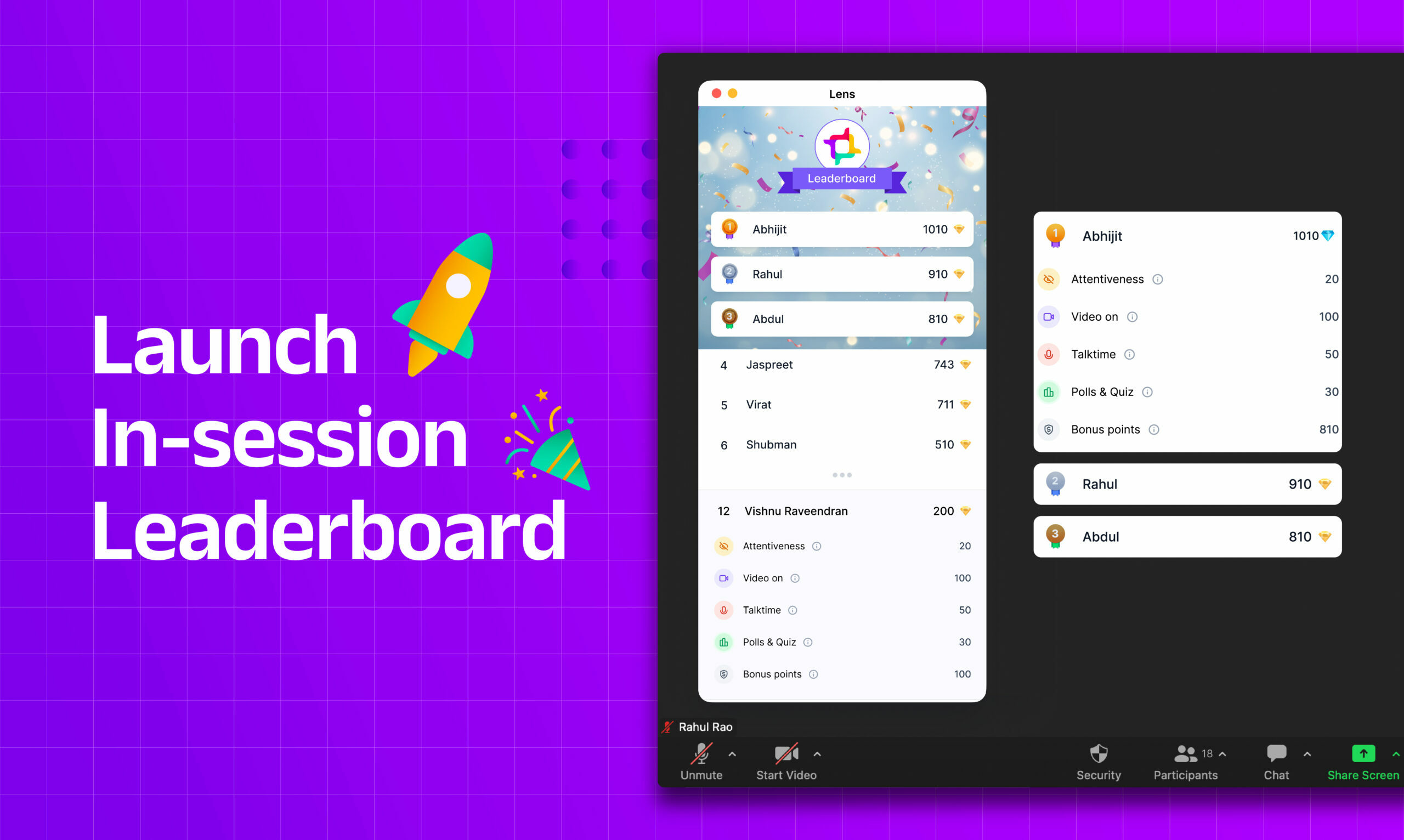EdTech content has become a vital part of the modern learning experience, with many students and educators relying on it for the delivery of education. However, ensuring that EdTech content is engaging and effective can be a challenge. In order to maximize learning outcomes and improve the quality of education, it’s crucial to assess the performance of EdTech content regularly. One of the most effective ways to do this is by monitoring engagement and attentiveness levels of students and educators. With advanced analytics tools, it’s now possible to receive early warning signs for low engagement and attention, which can indicate faults in the teaching methodology or lesson plans. This blog will explore the benefits of utilizing these tools in EdTech content review and how they can help enhance the quality of education. Whether you’re an educator, student, or an education administrator, this blog will provide valuable insights into how you can improve the performance of EdTech content.
1. Maximize Learning Outcomes with Early Warning Signs

EdTech has revolutionized the way education is delivered, providing more flexible and accessible learning experiences. However, with this shift comes the challenge of ensuring that the content is engaging and effective. One of the most important metrics in assessing the performance of EdTech content is engagement and attentiveness levels of students and educators. Low engagement and attention can be an early warning sign of faults in the teaching methodology or lesson plans.
To effectively review EdTech content, it’s important to utilize advanced analytics tools that provide insights into engagement and attentiveness. These tools allow educators to gain a deeper understanding of student engagement and make data-driven decisions to improve the effectiveness of their lessons. They also provide education administrators with valuable information on the performance of their school’s EdTech initiatives.
Advanced analytics tools can provide a clear picture of student engagement, allowing educators to identify areas for improvement and make changes that will lead to better learning outcomes. By monitoring engagement and attentiveness levels, educators and administrators can ensure that students are getting the most out of their EdTech experience.
2. Improve Teaching Methodologies with Early Warning Systems

Incorporating early warning systems into your teaching approach can have a profound impact on student engagement and learning outcomes. By monitoring engagement and attentiveness, educators can make data-driven decisions to improve the effectiveness of their lessons and enhance student learning.
Early warning systems provide valuable insights into student engagement and attention levels, allowing educators to identify areas for improvement in their teaching methodologies. By detecting issues in real-time, they can adjust their approach quickly and proactively, rather than waiting for the end of the term or semester to realize that their methods were not working. The wealth of data provided by early warning systems can also be used to inform future teaching methodologies and continuously improve the quality of education.
3. Use Analytics to Improve Lesson Plans

Lesson planning is a critical part of an educator’s job. A well-designed lesson can keep students engaged and improve their learning outcomes. However, creating a successful lesson plan can be a challenge, especially in the rapidly evolving world of EdTech.
Analytics can be a powerful tool in improving lesson plans. By utilizing advanced analytics tools, educators can gain a deeper understanding of student engagement and use this information to make informed decisions about their lesson plans. These tools provide valuable insights into student behavior, allowing educators to identify areas where they can make changes to increase engagement and improve learning outcomes.
One of the key benefits of using analytics in lesson planning is the ability to identify and address areas of weakness in real-time. This allows educators to make changes on the fly, rather than waiting until the end of a term or semester to make adjustments. By continuously monitoring and improving their lesson plans, educators can ensure that they are delivering the most effective and engaging content possible.
Another benefit of using analytics in lesson planning is the ability to track progress and assess the impact of changes over time. This data-driven approach allows educators to make informed decisions about their lesson plans, rather than relying on guesswork or intuition. By using analytics to inform lesson plans, educators can continuously improve their teaching and drive better results for their students.
4. Use This Solution to Detect Low Engagement and Attention in EdTechs

It is important to ensure that students are not only using EdTech tools, but also engaging with and retaining the information they are presented with.
Low engagement and attention in EdTech content can signal a problem with the teaching methodology or lesson plan. This can lead to poor learning outcomes and decreased motivation for students. To address this issue, it is essential to have a solution that can detect low engagement and attention in EdTech content.
Enter Lens, a powerful solution designed specifically for this purpose. Lens works by monitoring the talk time and screen time of EdTech participants, using these metrics as a proxy for engagement and attentiveness respectively. This allows educators to identify areas of low engagement and attention in real-time, and make changes to improve the effectiveness of their lessons.
Lens also provides a range of other features to enhance engagement and attention in EdTech content. For example, it allows hosts to organize polls and quizzes, run an in-meeting browser, and even gamify interactions with a leaderboard. By providing educators with deeper insights into student engagement, Lens can help to construct a more robust performance metric for online classes, ensuring that students are receiving the highest quality education possible.
5. Integrate Lens into EdTech Content Review

Lens is a powerful tool for monitoring and improving EdTech content. It provides a range of features to enhance engagement and attentiveness, including real-time monitoring of talk time and screen time, polls and quizzes, an in-meeting browser, and a leaderboard to gamify interactions.
The great news is that Lens can be integrated into any business using Zoom as their primary medium of communication. The integration is carried out through API keys from your personal Zoom account, which connects with Lens to provide you with all the data you need. This makes it incredibly easy to set up and start using, even for those with limited technical knowledge.
By integrating Lens into your EdTech content review process, you can gain valuable insights into student engagement and use this information to make informed decisions about your teaching methodologies and lesson plans. This can lead to improved learning outcomes, increased motivation, and a better overall experience for your students.
6. Utilize Advanced Analytics in EdTech Content Assessment

Lens provides valuable insights into student engagement and attention levels, enabling you to make informed decisions about your teaching methodologies and lesson plans. In this section,let’s explore some of the key steps that EdTech businesses can take to improve underperforming content and enhance the overall learning experience for students.
- Utilize advanced analytics tools to monitor student engagement and attention levels in real-time.
- Conduct regular polls and quizzes to gauge student understanding and engagement.
- Interact with underperforming students post-class to identify areas of improvement.
- Offer remedial classes for students who are struggling to keep up.
- Create a more interactive and engaging environment through debates and group discussions.
- Incorporate gamification elements, such as leaderboards, to incentivize students to participate.
- Regularly assess and adjust your teaching methodologies to ensure they are effective and engaging.
- Utilize data and insights from advanced analytics tools to inform lesson planning and curriculum development.
Conclusion
In conclusion, utilizing advanced analytics tools like Lens is a game-changer for EdTech businesses looking to assess the effectiveness of their content. By monitoring student engagement and attention levels in real-time, businesses can identify areas for improvement and make data-driven decisions to enhance the overall learning experience. Whether it’s through regular polls and quizzes, interactive post-class discussions, or gamification elements, there are numerous steps that businesses can take to improve underperforming content and stay ahead in the competitive world of EdTech. By leveraging the power of analytics, businesses can ensure that they are providing the best possible education to their students and setting them up for success.




